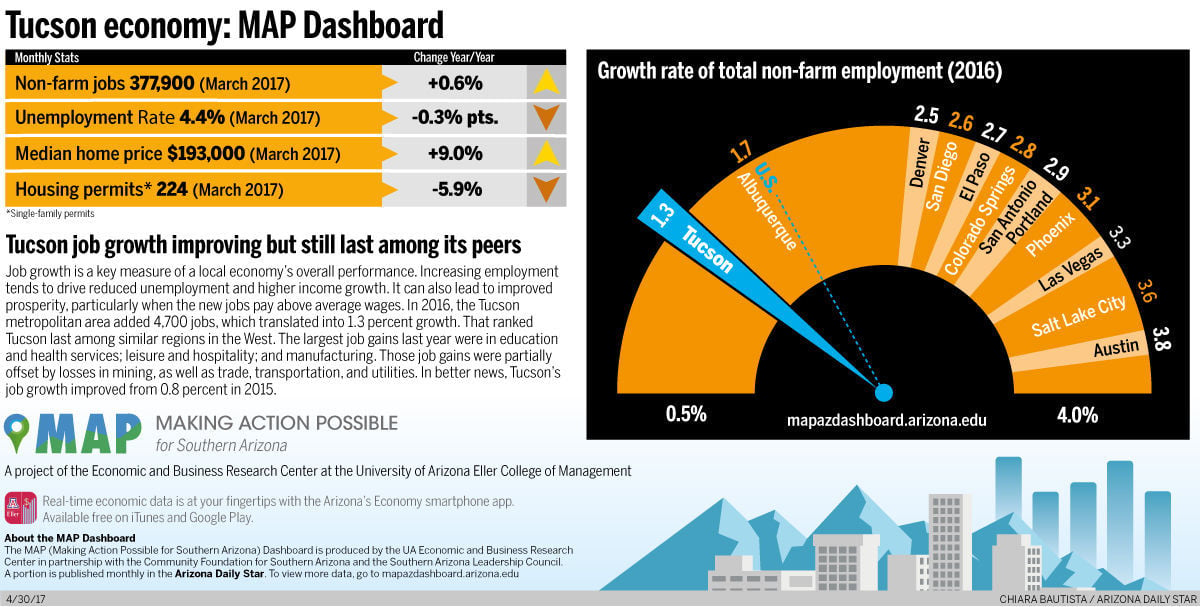In 2016, the ÃÛèÖÖ±²¥ metropolitan area added 4,700 jobs, which translated into 1.3 percent growth, according the University of ÃÛèÖÖ±²¥'s MAP Dashboard. That ranked ÃÛèÖÖ±²¥ last among similar regions in the West. The largest job gains last year were in education and health services; leisure and hospitality; and manufacturing. Those job gains were partially offset by losses in mining, as well as trade, transportation, and utilities. In better news, ÃÛèÖÖ±²¥â€™s job growth improved from 0.8 percent in 2015.
Editor's Pick Top Story
ÃÛèÖÖ±²¥ economy: Job growth weakest in West
- Special to the ÃÛèÖÖ±²¥
- Updated

Related to this story
UA's MAP Dashboard: Nearly half of college grads in ÃÛèÖÖ±²¥ majored in science or engineering fields
ÃÛèÖÖ±²¥ ranks high among its peers for the percentage of people covered by health insurance.
City still ranks 10th of 12 with cost of living factored in.
A higher labor-participation rate shows workers believe businesses are hiring for jobs that are worth their time and effort.
Number of ÃÛèÖÖ±²¥ business establishments fell in the wake of the Great Recession but grew in 2017, UA economists say.
ÃÛèÖÖ±²¥'s rate of job growth still trails most peer cities and the U.S., UA researchers found







